Managing and understanding our emotions is an essential aspect of maintaining our overall well-being. One useful tool that can assist us in tracking our moods and emotions is a mood chart. A mood chart allows individuals to monitor and record their emotions on a daily basis, providing valuable insights into personal patterns and triggers. In this article, we will explore some sample mood chart templates and discuss their benefits for Asian individuals.
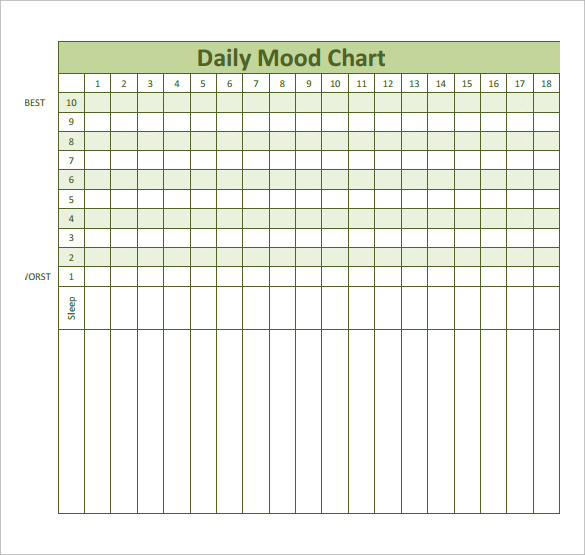 Sample Mood Chart Template
Sample Mood Chart Template
One of the key advantages of using a mood chart is that it helps individuals identify emotional patterns over time. By regularly filling out a mood chart, Asian individuals can gain a deeper understanding of their emotions and recognize any recurring themes or triggers that may be affecting their well-being.
 A daily mood chart template, such as the one shown above, allows individuals to track their emotions on a daily basis. It provides a visual representation of their mood fluctuations throughout the week, highlighting any patterns or trends that may emerge. This can be particularly beneficial for Asian individuals who may experience cultural or societal pressures that influence their emotional well-being.
A daily mood chart template, such as the one shown above, allows individuals to track their emotions on a daily basis. It provides a visual representation of their mood fluctuations throughout the week, highlighting any patterns or trends that may emerge. This can be particularly beneficial for Asian individuals who may experience cultural or societal pressures that influence their emotional well-being.
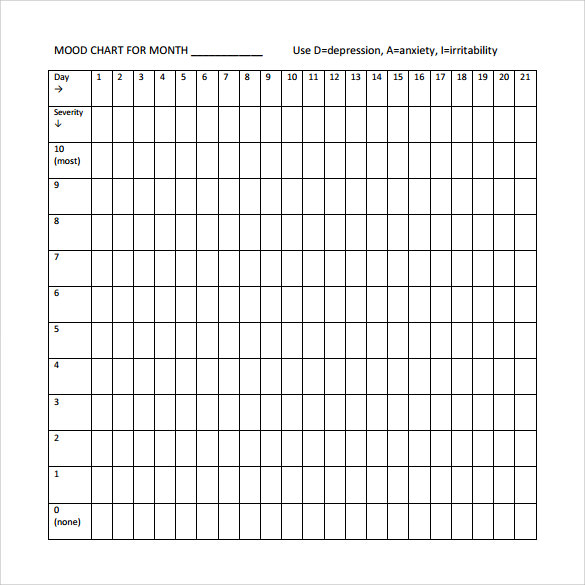 For those who prefer a broader overview, a monthly mood chart template, as depicted in the image above, can be an excellent choice. It enables Asian individuals to record their mood changes over a longer period, giving them a more comprehensive understanding of their emotional journey and potentially identifying certain triggers that impact their mood on a monthly or even seasonal basis.
For those who prefer a broader overview, a monthly mood chart template, as depicted in the image above, can be an excellent choice. It enables Asian individuals to record their mood changes over a longer period, giving them a more comprehensive understanding of their emotional journey and potentially identifying certain triggers that impact their mood on a monthly or even seasonal basis.
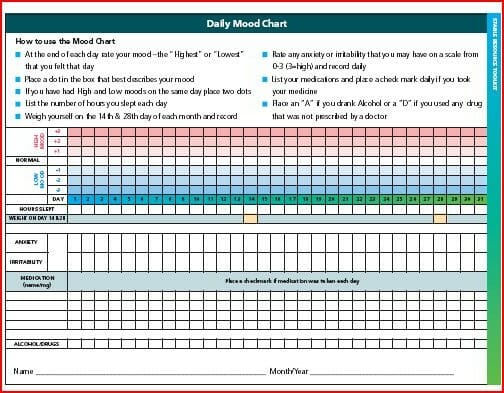 Individuals who may suspect they have bipolar disorder can benefit from using a specialized bipolar mood chart template. This template, as shown in the image above, offers more detailed fields to monitor mood changes, daily energy levels, medication intake, and other factors. It serves as an essential tool not only for individuals but also for healthcare providers in diagnosing and managing bipolar disorder.
Individuals who may suspect they have bipolar disorder can benefit from using a specialized bipolar mood chart template. This template, as shown in the image above, offers more detailed fields to monitor mood changes, daily energy levels, medication intake, and other factors. It serves as an essential tool not only for individuals but also for healthcare providers in diagnosing and managing bipolar disorder.
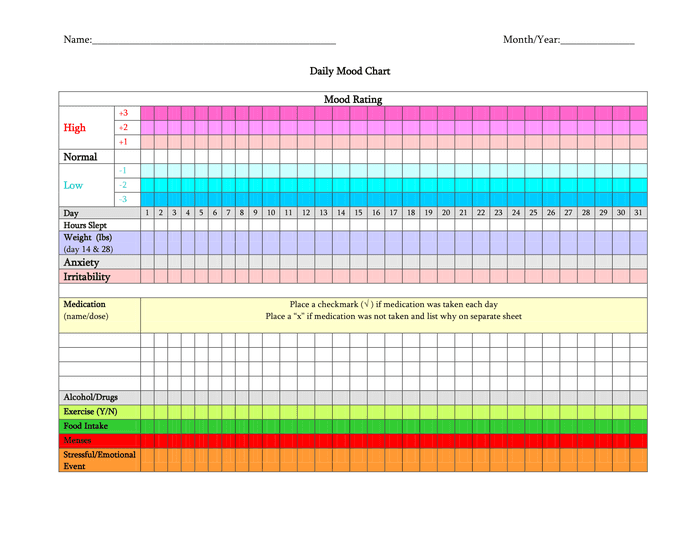 Understanding the Daily Mood Chart Template
Understanding the Daily Mood Chart Template
The daily mood chart template, as seen above, is a handy resource for Asian individuals who wish to monitor their emotions on a daily basis. It typically consists of a simple table with columns for date, mood, notes, and other relevant information. By regularly filling out this chart, individuals can identify specific triggers or activities that positively or negatively affect their emotional state.
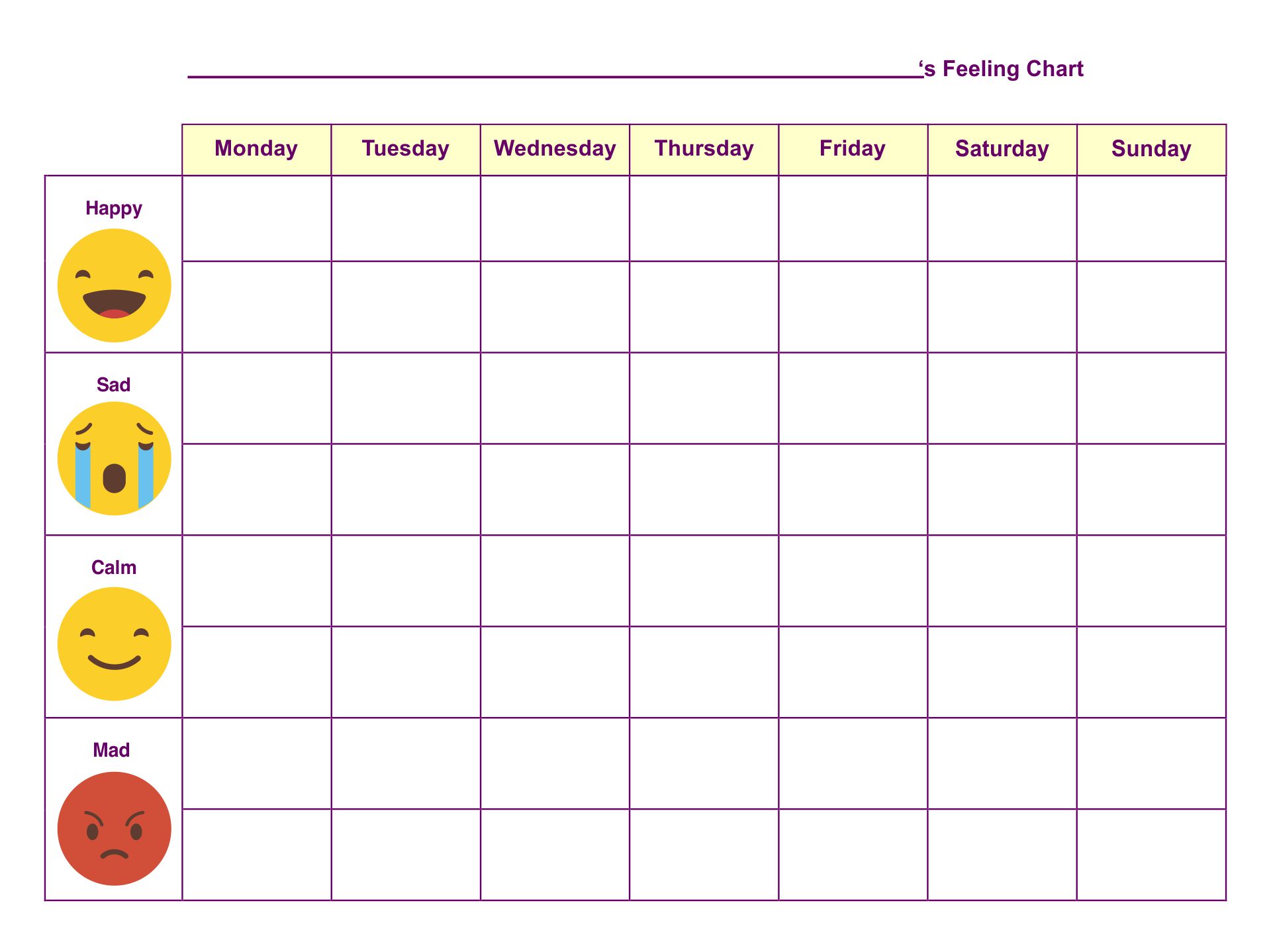 Asian individuals who prefer a more visually appealing daily mood chart template might appreciate the colorful format shown in the image above. This template not only provides space for recording mood but also encourages individuals to document their feelings and thoughts, promoting self-reflection and emotional awareness.
Asian individuals who prefer a more visually appealing daily mood chart template might appreciate the colorful format shown in the image above. This template not only provides space for recording mood but also encourages individuals to document their feelings and thoughts, promoting self-reflection and emotional awareness.
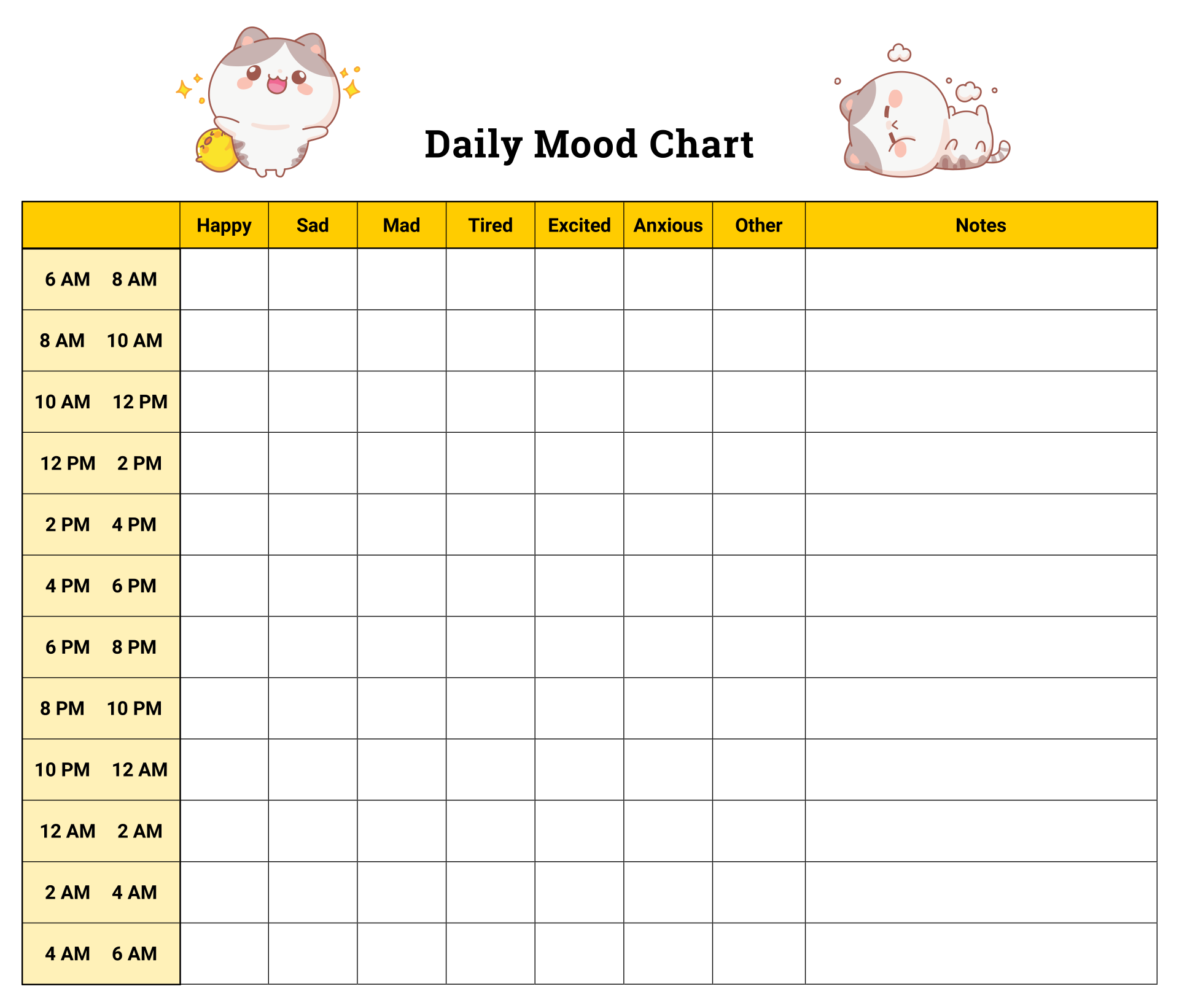 Another visually appealing daily mood chart template, as shown above, emphasizes the importance of recognizing emotions. It encourages Asian individuals to identify and document specific feelings they experience throughout the day, fostering emotional intelligence and self-awareness.
Another visually appealing daily mood chart template, as shown above, emphasizes the importance of recognizing emotions. It encourages Asian individuals to identify and document specific feelings they experience throughout the day, fostering emotional intelligence and self-awareness.
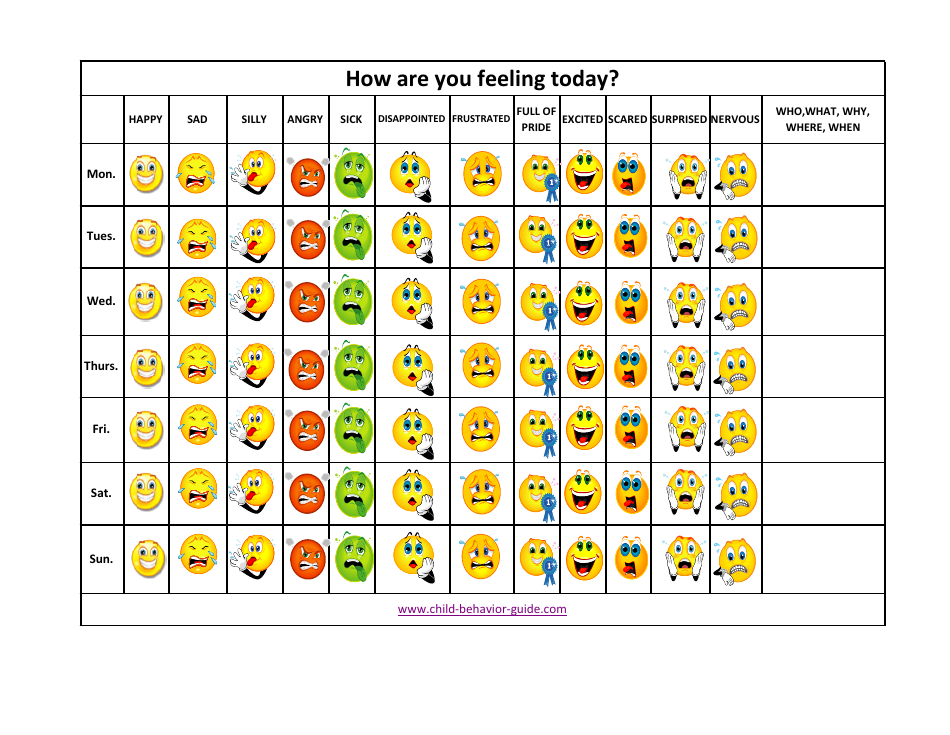 The Benefits of Using a Mood Chart Template
The Benefits of Using a Mood Chart Template
Utilizing a mood chart template can have several advantages for Asian individuals. Firstly, it allows them to track their emotions, identify triggers, and understand their emotional patterns. This awareness provides valuable insights into potential stressors or factors that positively or negatively influence their mood.
 Additionally, Asian individuals may find it beneficial to introduce mood charting to their children. For example, the “Kids Feeling Mood Tracker” image above showcases a simplified mood chart template explicitly designed for children. This tool allows kids to express and communicate their emotions effectively, fostering emotional intelligence and healthy emotional expression from an early age.
Additionally, Asian individuals may find it beneficial to introduce mood charting to their children. For example, the “Kids Feeling Mood Tracker” image above showcases a simplified mood chart template explicitly designed for children. This tool allows kids to express and communicate their emotions effectively, fostering emotional intelligence and healthy emotional expression from an early age.
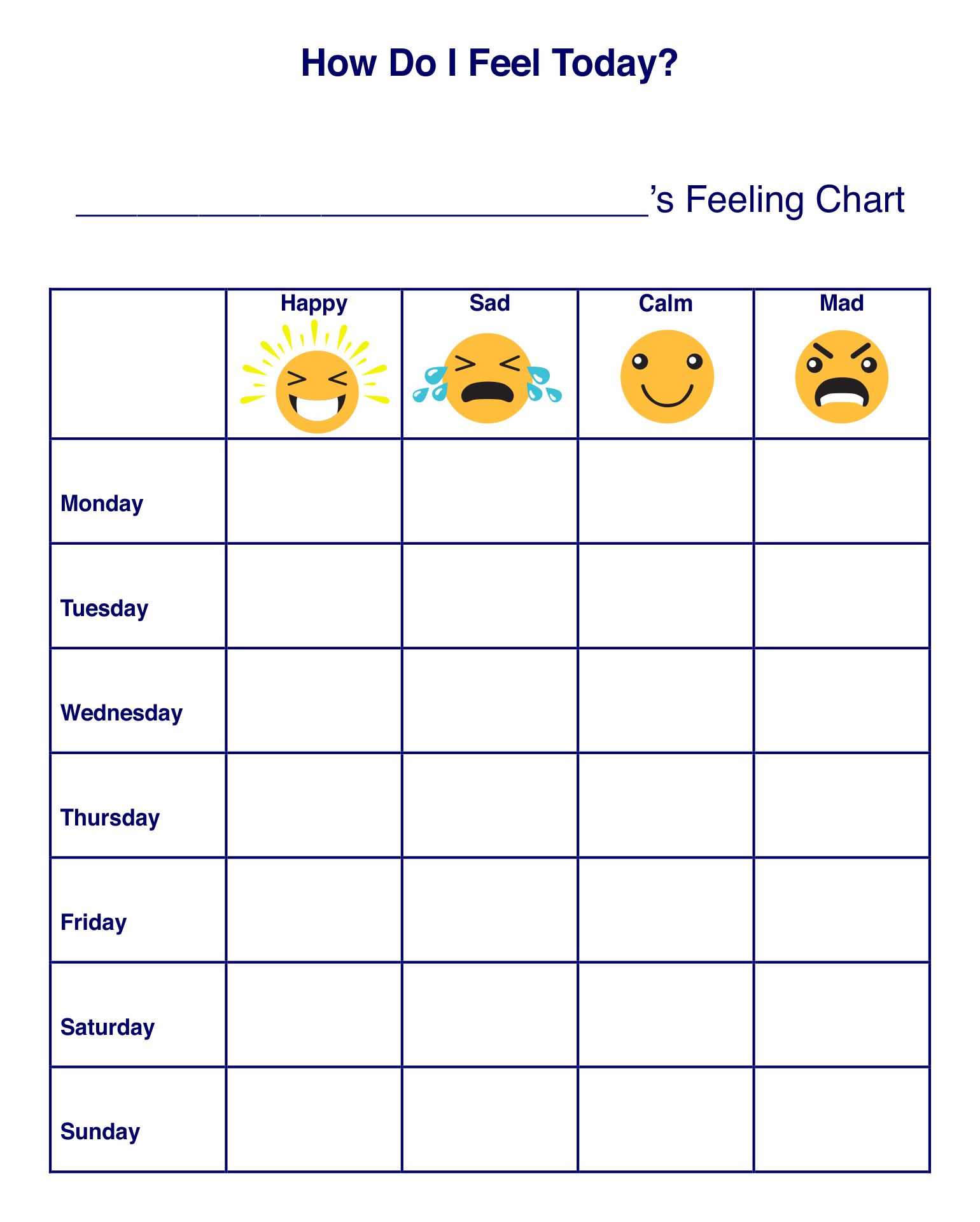 Lastly, the customizable nature of these mood chart templates enables individuals to adapt them to their specific needs and preferences. Whether it is adjusting the layout, adding more detailed categories, or customizing the colors, Asian individuals can create a mood chart that resonates with their personality and cultural background.
Lastly, the customizable nature of these mood chart templates enables individuals to adapt them to their specific needs and preferences. Whether it is adjusting the layout, adding more detailed categories, or customizing the colors, Asian individuals can create a mood chart that resonates with their personality and cultural background.
In conclusion, mood chart templates are valuable tools that can assist Asian individuals in monitoring and understanding their emotions. By regularly filling out these charts, individuals can gain insights into their emotional patterns, identify triggers, and take proactive steps towards improving their overall well-being. Whether it is a daily, monthly, or specialized mood chart, Asian individuals can find a template that suits their preferences and supports their mental health journey.